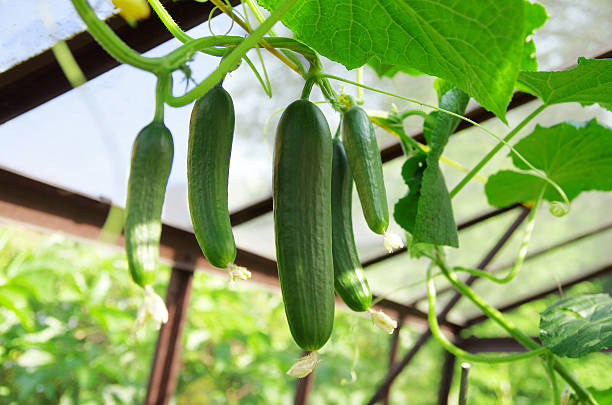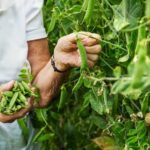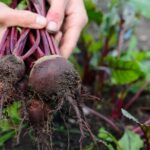The journey from planting cucumber seeds to harvesting crisp, juicy cucumbers is an exciting and rewarding process for any gardener. In this comprehensive guide, we’ll explore every aspect of cucumber cultivation, from choosing the right cucumber seeds to nurturing your plants and finally harvesting your cucumbers. Cucumbers are one of the most popular vegetables grown in both commercial farms and home gardens. These refreshing, versatile fruits are not only delicious but also packed with essential nutrients.
Choosing the Right Cucumber Seeds
To select the right cucumber seeds for the Indian market and climate, it’s essential to consider various factors such as the seed variety, growth conditions, and optimal planting times.
Recommended Cucumber Seed Varieties
Hybrid Varieties:
- Pahuja F1 Hybrid Cucumber seeds: Most popular among farmers for the fresh market due to their superior yield and quality.
Krish F1: Known for high yields and disease resistance.
NS 404: Offers good germination rates and is suitable for various climates.
Seminis Malini: Light green fruit with high yield potential.
Iris Hybrid Varieties: Includes multiple options like Ganesha and Ustad, known for robust growth and adaptability.
Traditional Varieties:
Sambar Cucumber: A native variety that thrives in home gardens and is well-suited for terrace gardening.
High-Yielding Options:
Esha Pallavi: Early maturing and high-yielding, ideal for farmers looking for quick returns.
FB-Keshari: Produces cylindrical cucumbers with good market demand.
These varieties are available from several suppliers in India, including Badikheti, BigHaat, and Agriplex, which offer a range of seeds with excellent germination rates and disease resistance
Preparing the Soil for Cucumber Seeds
Fertile, well-draining soil with a pH of 6.0 to 7.0 is ideal for growing cucumbers. It is important that you prepare the soil adequately before planting your cucumber seeds.
First, remove any weeds and rubbish from the area. Then, use a garden fork or tiller to till the soil down to a depth of 8 to 12 inches. This enhances drainage and loosens the soil.
Now, enrich the soil with a large amount of organic matter, such as aged manure or compost that has decayed well. This makes the soil more nutrient-rich and structurally sound, which will help your cucumber seeds sprout and thrive.
Adding organic matter is especially crucial to improve the texture and water-retention capacity of heavy clay or very sandy soils. To find out if any more amendments are required to get the right pH and nutrient levels for cucumber growth, think about doing a soil test. After preparing the soil, level the planting site for your cucumber seeds by raking it flat.
Planting Cucumber Seeds
You can start cucumber seeds indoors for earlier harvests, or you can put them straight in the yard. Wait until all risk of frost has passed and soil temperature has reached at least 60°F (15°C) before planting immediately outside. This usually occurs two to three weeks following the last regular frost date in most areas. Make little mounds of soil in the garden that are 12 to 18 inches in diameter and 1-2 inches high in order to immediately plant cucumber seeds. Depending on the type of cucumber you’re producing, space these mounds three to five feet apart. Place 4-6 cucumber seeds, spaced 2-3 inches apart and 1 inch deep, in each mound.
Thin the seedlings to the strongest two or three plants per mound as soon as they sprout and produce their first genuine leaves. If you would rather start your cucumber seeds inside, plant them three to four weeks prior to the last anticipated frost date in peat pots or biodegradable containers. Sow two to three seeds in each container, spacing them approximately half an inch apart. Until germination takes place, which typically takes three to ten days, keep the soil continuously moist and warm (around 70°F or 21°C).
Caring for Cucumber Seedlings
After your seeds have sprouted and your seedlings have emerged, proper care is necessary for healthy growth. If you started your seeds indoors, start the process of hardening off your seedlings approximately one week before moving them outside. Hardening off entails acclimating the young plants to outdoor conditions by starting them outside for a few hours each day in a sheltered spot and gradually increasing the time and exposure to sun and wind over the course of a week.
Plant the seedlings at the same depth as they were growing in their containers after handling them gently during the transplanting process. After planting, give both direct-sown and transplanted seedlings plenty of water to let the soil settle around the roots. Cover immature cucumber plants with row covers or wrap collars around the stems to keep pests away. Support the plants using trellises, cages, or posts as they grow to keep the vines off the ground and improve air circulation.
Watering and Fertilizing Cucumber Plants
Sufficient irrigation and fertilisation are essential for robust cucumber plants and bountiful yields. Because of their thin root systems, cucumbers need constant moisture to flourish. Rainfall or irrigation should be used to provide one to two inches of water per week, deep and often. Do not water your plants from above, as this can encourage fungus-related illnesses. Instead, apply water directly to the soil using soaker hoses or drip irrigation. Straw or shredded leaves can be used as an organic mulch around plants to help keep the soil moist and discourage weed growth.
Cucumbers are heavy feeders and gain from consistent nutrient sprays applied during the growing season. Before planting, start by adding a balanced, slow-release fertiliser to the soil. To promote fruit growth, switch to a fertiliser with greater phosphorus and potassium once the plants start to blossom and set fruit. Use fertiliser every three to four weeks, paying attention to the recommended application rates on the packaging. As an alternative, for a more organic method of feeding your cucumber plants, you can use fish emulsion or compost tea.
Managing Pests and Diseases in Cucumber Plants
Cucumbers are prone to a number of pests and illnesses, just like any other garden plant. Aphids, spider mites, and cucumber beetles are common pests of cucumbers. Regularly check your plants for indications of infestation and act quickly to manage these insects. Effective organic management techniques include hand-picking beetles, treating aphids with insecticidal soaps, and spraying plants with a powerful stream of water to remove spider mites. Consider applying neem oil or other organic pesticides for more serious infestations.
Cucumber plants are susceptible to bacterial wilt, downy mildew, and powdery mildew. Practice good garden hygiene by eliminating contaminated plant debris as soon as possible and refraining from overhead watering in order to prevent these problems. Numerous common cucumber diseases can also be avoided by selecting disease-resistant types and leaving enough space between plants to allow for air circulation. If diseases do arise, eradicate the most severely afflicted plants to stop them from spreading to healthy ones or treat them with the proper fungicides.
Pollination and Fruit Set in Cucumber Plants
Effective pollination is necessary for the development of cucumber fruits. On the same plant, the majority of cucumber cultivars yield both male and female flowers. Usually, male flowers open first, and are followed by female flowers, which have a little, immature cucumber behind the bloom. The process of moving pollen from male to female flowers is greatly aided by bees and other pollinators. Plant pollinator-friendly flowers close by and refrain from using pesticides during flowering seasons to promote pollinator activity in your yard.
You might need to hand-pollinate your cucumber blooms if you’re cultivating them in a greenhouse or if there aren’t many pollinators in your area. To accomplish this, move pollen from male to female flowers using a tiny brush or cotton swab. Certain cucumber cultivars have the ability to bear fruit even in the absence of pollination. These kinds work well in greenhouses or places with few pollinator populations. After pollination, when the fruits start to develop, watch their growth and harvest them when they reach the right size for the kind you are cultivating.
Harvesting and Storing Cucumbers
The type of cucumber you are growing and how you plan to use the fruits will determine when to harvest them. Cucumbers are generally ready to be harvested when they are fully coloured and grown, but not too ripe or bitter. This is the time of year when the majority of slicing cucumbers are 6 to 8 inches long and have a vivid green hue. Cucumbers used for pickling are usually harvested when they are 2 to 4 inches long. To harvest, cut the cucumber from the vine, leaving a short stem attached, using clean, sharp pruning shears or a knife. The vines may be harmed if the fruits are twisted or pulled. To ensure that your cucumber crop continues all season, harvest them on a regular basis.
Cucumbers should be refrigerated for up to a week after picking. Think about pickling or fermenting your cucumbers for longer-term storage. Should you intend to preserve the seeds from your cucumber plants, let a couple of fruits ripen completely on the vine until they start to turn yellow and get tender. The seeds should then be removed, cleaned, and dried completely before being stored in a cold, dry location for further plantings.
Extending the Cucumber Growing Season
If you want to get the most out of your cucumber harvests, think about extending the growing season. Cucumber seeds can be started indoors in colder locations, and you can protect young plants from late spring frosts by using techniques like cold frames or row covers, which lengthen the growing season. Plant a second crop of cucumbers in midsummer for fall harvests; select types that mature more quickly so they may be harvested before the first frost.
If you give your cucumbers shade during the hottest part of the summer and protection from the occasional cold snap in the winter, you might be able to grow them year-round in warmer climates. You may enjoy fresh, homegrown cucumbers for a large portion of the year by expanding your cucumber growing season using greenhouse or polytunnel gardening.
Saving Cucumber Seeds for Future Plantings
Preserving your preferred cucumber types and gradually adjusting them to your unique growing conditions can be accomplished by keeping the seeds from your best plants if you’re cultivating open-pollinated kinds. Choose fruits from robust, vigorous plants that have the desired characteristics if you want to preserve cucumber seeds. Let these cucumbers ripen completely on the vine until they start to get soft and turn yellow. Cut the overripe cucumbers in half lengthwise after harvesting them. Empty the container after scooping out the seeds and surrounding pulp. Stirring occasionally, let the mixture ferment for two to three days at room temperature after adding a tiny amount of water. Certain seed-borne illnesses can be eradicated as well as the gel covering that surrounds the seeds thanks to this fermentation process.
When the seeds are completely dry, which usually takes a week, spread them out on a paper towel or screen and rinse them well in a fine-mesh strainer to remove any remaining pulp or debris. Once dry, store the seeds in an airtight container in a cool, dry place, where they will keep for up to five years.
Conclusion
Enjoying fresh, crisp cucumbers straight from your own garden is a delightful experience that comes with growing cucumbers from seed to harvest. You can guarantee a plentiful harvest of cucumbers by choosing your cucumber seeds carefully, getting your soil ready, and giving your plants constant attention during the growing season.
The process of sowing small cucumber seeds and reaping fully developed fruits is a monument to the wonders of nature and the joys of gardening, regardless of whether you’re producing cucumbers for pickling, fresh eating, or seed preservation. With the skills and information provided in this guide, you’ll be ready to start your cucumber growing journey and reap the rewards of your efforts all summer long.


